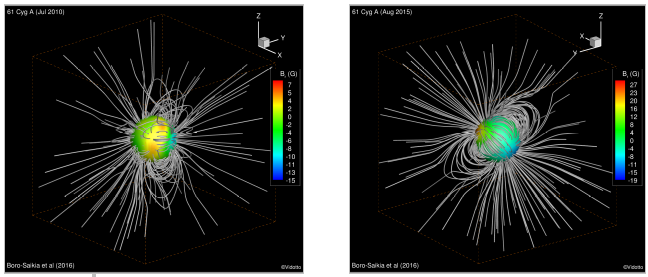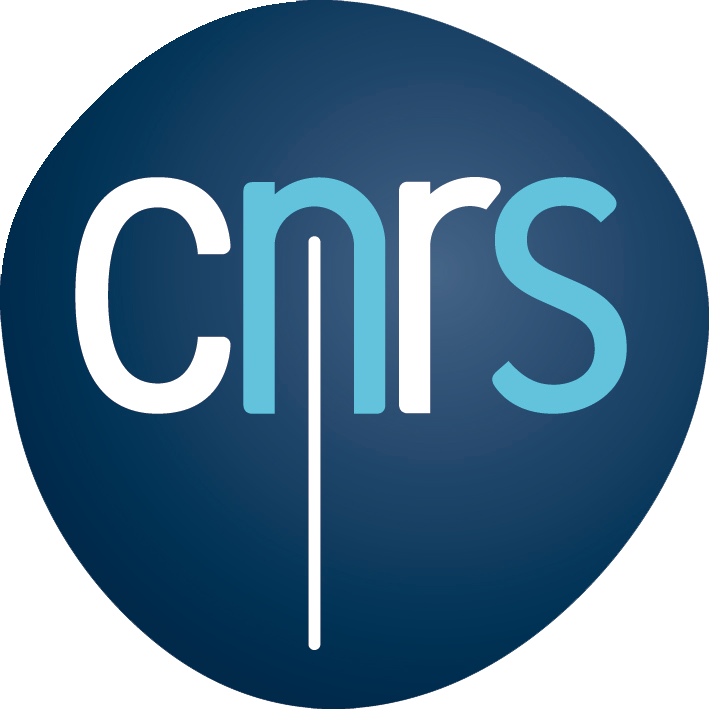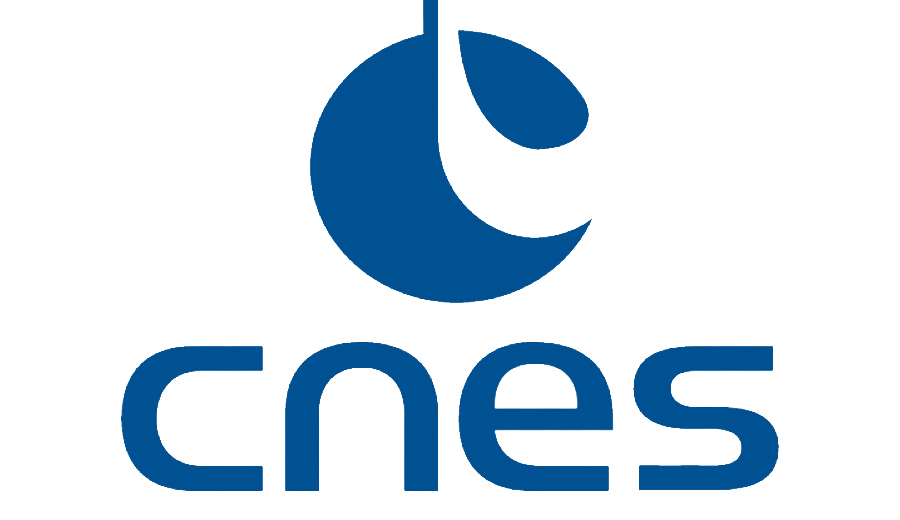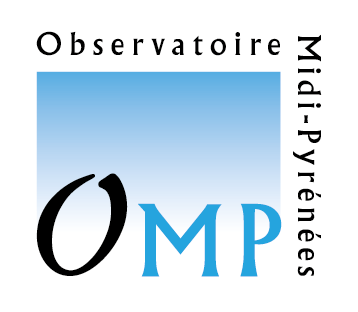61 Cyg A : First observation of a magnetic cycle of solar type
Astronomers have long wandered whether the characteristics of the Sun make it a particular object, or just a typical star among many others. After nine years of intensive observations, a team of scientists, including researchers of the IRAP (CNRS / Université Paul Sabatier), has discovered the first star whose magnetic field varies like that of the Sun : with an inversion of the polarity when the activity of the star is at its maximum, and with a magnetic geometry which simplifies at the approach to the minimum. This important discovery in the field of stellar physics will also improve the modeling of the processes occurring within the Sun, and lead to better understand the effects of its magnetic activity on Earth as well as on our various technologies. The star studied, 61 Cyg A, is located some eleven light-years from Earth, making it one of the closest neighbours of the Sun. These results show that its magnetic field becomes much more complex before each reversal, opening the way for new advances in the modeling of the processes at work within the Sun. This result is published online on October 6, 2016 in Astronomy & Astrophysics.
For many years, we have known that the vast majority, if not all stars are active – to varying degrees, and that this activity (detectable through variations in the brightness of stars for example) results from their magnetic fields. The Sun, the closest star to the Earth, is no exception: its variations throughout the 22-year magnetic cycle are accompanied by an inversion of the polarity of its magnetic field every 11 years. Solar fluctuations are relatively small and rather slow compared to those of known magnetically active stars, most of which vary considerably in terms of luminosity, are the site of intense and violent stellar eruptions, and whose variability over periods of a few months to a few years is much more complex than the solar cycle. For this reason, astronomers have long wondered if our Sun is special, or if other stars have the same variability.
The Sun’s activity is intrinsically linked to its magnetic field, which is directly responsible for the appearance of surface spots and flares. This same field also feeds the solar wind, which is a continuous flow of matter in space. Over a period of some twenty-two years, all of these characteristics vary, increasing and decreasing regularly. Two “active periods” are thus interspersed with calmer “solar minima”. For more than forty years, astronomers have been observing nearby stars in search of a star that behaves similarly to our Sun. These observations have revealed the existence of stars with similar decadal variability. However, the question of whether this variability and the magnetic field inversion were consistent has not been answered.
The advent, about ten years ago, of dedicated instruments called “stellar spectropolarimeters”, has made it possible to map the magnetic fields of nearby Sun-like stars. Thanks to this new technology, which equips the Bernard Lyot Telescope1 installed at the Pic du Midi, the astronomers of the Bcool2 team have carried out observational monitoring of a certain number of nearby stars, including 61 Cyg A. Smaller in size and with lower luminosity than the Sun, this star located in the northern constellation of Cyg A is barely visible to the naked eye.
These observations revealed the great similarity between 61 Swan A and the Sun. Unlike the Sun, 61 Cygni is a binary system whose two components, 61 Cyg A and 61 Cyg B, are slightly smaller in size and brightness than the Sun. Despite these differences, 61 Cyg A exhibits variations in activity that coincide with changes in the polarity of its magnetic field – these changes occur every 7 years, and the complete magnetic cycle lasts 14 years. Furthermore, the magnetic field of 61 Cyg A becomes even more complex as these “inversions” approach (Figure 1). This behaviour is perfectly analogous to that of the Sun. This is the very first time that such a similarity has been observed.

“Observational evidence of the existence of Sun-like magnetic activity in stars such as 61 Cyg A will enable us to simulate, via computer models, the creation of solar-type stellar magnetic fields, and to better understand the dynamo processes at work in Sun-like stars, and therefore in the Sun itself”, says Pascal Petit, a researcher at IRAP, one of the co-authors of this study. Understanding how solar-type stars generate their magnetic fields and the effects of these magnetic fields on the evolution of planets and the development of life is one of the key themes of modern astrophysics. The study of other stars will also allow us to better understand the processes that generate the solar magnetic field and its impact on terrestrial and on-board technology. The solar wind and especially the ejections of coronal matter produced by solar flares can indeed have important repercussions on Earth. When these plasma streams reach the Earth, they not only produce the aurora borealis and aurora australis, which illuminate the winter nights of the polar regions (Figure 2), but they can also disrupt radio communications and power grids on the ground, as well as damage satellites and threaten the health of astronauts in Earth orbit.

Notes
- Le TBL (Télescope Bernard Lyot) est opéré par l’IRAP / OMP, le CNRS / INSU et l’UFTMiP / UPS
- Plus d’information sur le projet BCool sur cette page web
Reference
- Astronomy & Astrophysics, Boro Saikia et al. 2016, A&A, 594, A29
IRAP Contact
- Pascal Petit – Tel : 05 61 33 28 28 – pascal.petit@irap.omp.eu






